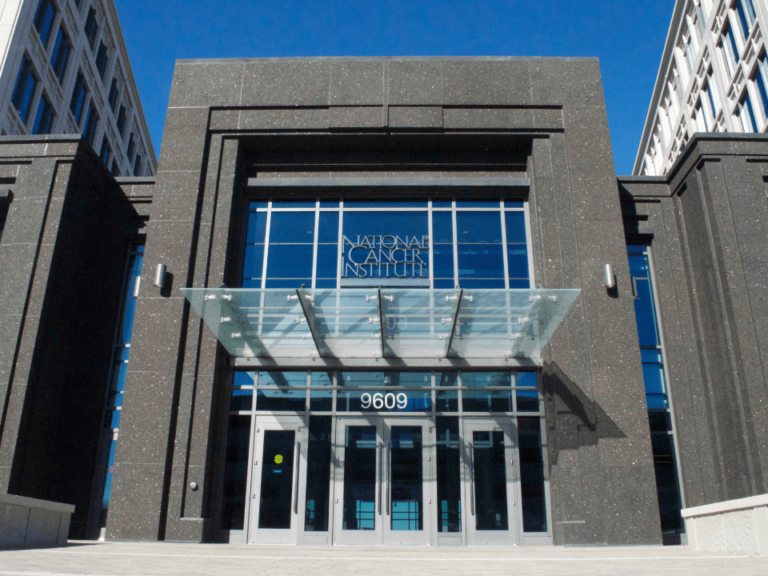The decision to double the budget of the National Institutes of Health should be easy, because it will save lives and save our economy simultaneously. The case for NIH is overwhelming, and there is broad bipartisan congressional support. So why is it so challenging?
At a time of staggering budget debt and deficits, funding decisions are indeed very difficult. Congress must fund many competing and worthy programs, all seeking increases, and many backed by powerful interests.
Congress is constrained by the necessity to work within its annual budget, and disproportionate increases to NIH may force reductions to other critical programs.
Meanwhile, the next great threat to our nation and its economy looms large as the massive, aging, baby boomer generation confronts the costs associated with chronic diseases including Alzheimer’s, Parkinson’s, cancer, diabetes, and heart disease. It is only through the tremendous promise of science that we will find solutions to the most intractable diseases and conditions, and rein in escalating health care costs that are on a trajectory to bankrupt the federal government.
In 2018, total federal health care spending was $1.1 trillion, and is projected to skyrocket to $4 trillion by 2040, devouring an ever-greater portion of the federal budget.
If we don’t act now, it will be impossible to fix this later, as ever-increasing debt and deficits will force Congress to either drastically increase taxes, cut-back and eliminate countless programs, or both.
This is the greatest time in history for scientific discovery. Transformative cures are within our grasp—triumphs of human ingenuity that will save millions of lives and vanquish afflictions that have vexed us for centuries.
Even with historic increases to the NIH budget in the past four years, funding levels are not even close to adequate to capitalize on all of today’s great scientific opportunities.
We are delaying and discarding the majority of promising NIH research grants because there are simply not enough funds available for all the highly-merited research.
With so much at stake, NIH should receive increases in funding commensurate with the impending health and financial crisis, yet the federal budget allocates a mere one percent towards medical research.
Doubling the NIH budget within 10 years is the only way to avert a devastating health—and health care cost—crisis.
The cost is billions, the return is trillions, and it is priceless to patients and their families.
Thanks to NIH:
Thanks to NIH-funded research, Americans are living longer and healthier lives. Biomedical research has helped eradicate polio and smallpox, and all but eliminated death from some cancers.
It has led to a 70 percent reduction in the death rate for coronary heart disease and stroke, and an AIDS-free generation is within our reach.
Advances in genomics, immunotherapy, big data analytics, artificial intelligence, and imaging technologies have unleashed a new world of exploration and innovation.
As we unlock the secrets of the human genome, medical researchers have led us to an era of precision medicine that is transforming the way we prevent, diagnose, treat and cure many diseases.
There are no incurable diseases, only diseases that haven’t been cured yet.
U.S. global leadership
For a century—the American Century—American ingenuity has unleashed the greatest explosion of discovery and innovation the world has ever seen. Federal investment in biomedical research has made the United States the global research powerhouse.
But other nations are emulating our proven financial model to revitalize their economies by fueling their own biomedical research enterprises. China, India, the European Union, and Russia have all declared their intentions to dramatically increase their research investment. In 2019, for the first time in history, China will outspend the U.S. in research and development.
Our brightest young scientists are being lured by foreign countries to conduct scientific advances outside the U.S., and this trend now threatens our global leadership in biomedical research. This exodus of our most brilliant and talented minds has considerable consequences for patients, our research institutions, and our economy.
America must retain its preeminence in science and technology to remain competitive in today’s global innovation-based economy.
Our economy
Over the past two centuries, at least half of all economic growth can be attributed to advances in public health and medicine that have led to longer, healthier lives.
Today, we are at the dawn of a life sciences revolution that will drive our economy and is already the life-blood of countless multi-billion dollar companies in the biotechnology and pharmaceutical industries.
Choose any medical advance by a pharmaceutical or biotechnology company, and chances are it emerged from an NIH-funded lab. The $3.8 billion NIH-funded Human Genome Project has generated a return to the U.S economy in excess of $1 trillion.
The returns on NIH investment are immeasurable and soaring.
Investment in medical research stimulates economic growth by driving innovation, creating jobs, and improving America’s global competitiveness. Nearly 95 percent of NIH’s budget funds medical research by scientists, research institutions, and small businesses in every state across the country.
This investment creates more than 400,000 jobs in local economies and drives nearly $69 billion in economic activity.
In turn, the American bioscience industry employs more than 1.74 million people, and exports $90 billion in goods and services annually. No federal expenditure has a better return on investment and does more to create jobs and grow wealth.
Our budget
The personal and fiscal benefits of the extension of life and the extension of a healthy life are critical to patients, and vital to our economy. Someone in the U.S. is diagnosed with cancer every 18 seconds, and there will be a 50 percent increase in cancer incidence in the next decade.
As we unlock the secrets of the human genome, medical researchers have led us to an era of precision medicine that is transforming the way we prevent, diagnose, treat and cure many diseases.
Someone is diagnosed with Alzheimer’s disease every 65 seconds, and the number of Americans plagued with Alzheimer’s will triple in the next 30 years.
In 2018, Alzheimer’s and other dementias cost the nation $277 billion. In 2050, Alzheimer’s is projected to cost the nation $1.1 trillion. From 2017-2050, the cumulative federal health care cost for Alzheimer’s is projected to be $20.4 trillion.
Treatments that delay the onset of Alzheimer’s by five years would result in Medicare and Medicaid savings of $534 billion in the first ten years, and $3.1 trillion over 25 years. Medical illness is also the number one cause of personal bankruptcy.
The lives of patients and families are turned upside down when healthy and productive tax-paying Americans who lose their health—and are experiencing horrific suffering—may also lose their job, home, and life savings.
Congressional champions
The top Democrats and Republicans of the Labor, Health and Human Services Appropriations Subcommittees in the Senate and House, Sens. Roy Blunt (R-MO) and Patty Murray (D-WA), and Reps. Rosa DeLauro (D-CT) and Tom Cole (R-OK), have shown extraordinary commitment to NIH.
Through their unwavering leadership, fiscal year 2019 marks the fourth consecutive year of multi-billion-dollar increases to the NIH budget, which currently stands at $39.1 billion.
Following twelve years of eroding NIH budgets, this recent boost in funding was desperately needed. Thousands more brilliant young scientists are now able to pursue their dreams of research and launch major NIH research initiatives that will result in treatments and cures that will transform lives.
Congress has elevated NIH as a bipartisan national priority and this renewed congressional investment in NIH will have an impact on global health for generations to come.
Millions across the globe will be spared from the ravages of disease. Among the giants in the history of global health are the NIH congressional champions, who understand the enormous power of science to ease human suffering, and have demonstrated a compassionate resolve to conquer illness.
Double the NIH budget
America’s leaders have the vision and determination to proactively address the grand challenges facing our nation.
It would be difficult to overstate the dire repercussions to our personal and financial health if we don’t act decisively, strategically, and urgently.
Doubling the NIH budget over 10 years is certainly audacious, but nothing less than the health and wealth of our nation is at stake.
There is no higher calling than to improve the wellbeing of others, and there is no single action that will do more to advance our nation and improve the human condition than doubling the NIH budget.
There are too many patients to be patient.
I am grateful to our many partners in research advocacy that were an important resource for this article including: The Ad Hoc Group for Medical Research, Alzheimer’s Association, FasterCures, The Lasker Foundation, Research!America, and United for Medical Research.












